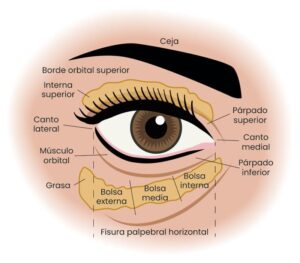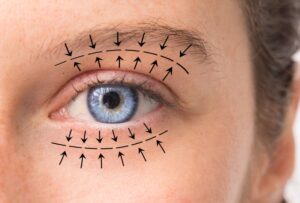When considering the ideal age for rhinoplasty, you may be faced with a complex scenario of physical and emotional factors. The decision to undergo such a transformative procedure should not be taken lightly. While physical development is a key consideration, the nuances of emotional readiness and setting realistic expectations also come into play. The question remains: is there really an age that stands out as the perfect time for this procedure, or is it a combination of factors that ultimately determines the ideal time to achieve the desired results?
Key points
- The ideal age for rhinoplasty is typically after the completion of facial growth.
- Surgeons recommend waiting until your late teens or early twenties.
- Emotional maturity is crucial for decision-making.
- A consultation with a plastic surgeon is essential to assess age.
- Understanding the risks and benefits is vital before proceeding.
Understanding Rhinoplasty
Do you really understand the details and complexities of the rhinoplasty procedure?
Exploring the scope of physical changes, you need to understand the profound impact this surgery can have on your facial structure.
Are you psychologically prepared to embark on this transformative journey, aligning your aesthetic goals with the possible results?
The imminent shadows of surgical risks are lurking, demanding your attention and consideration.
As you navigate the recovery process, are you prepared for the challenges that may arise, both physically and emotionally?
It is essential to approach rhinoplasty with a critical eye, questioning every step along the way to ensure your safety and satisfaction in the quest for the desired aesthetic transformation.
Physical Development Factors
During adolescence, hormone-driven physical changes can vary widely between individuals, influencing social and emotional experiences. Hormonal effects play a significant role in the diverse results observed in men and women during puberty.
Genetic influences also contribute to differences in physical development, leading adolescents to transform from childhood to adulthood at different rates. The impact of puberty is evident in the timing of milestones, with some maturing earlier or later than their peers, which can lead to social and emotional challenges.
Nutritional support is crucial for proper growth, as a balanced diet provides essential nutrients needed for physical development. The variations in growth between individuals highlight the importance of understanding the multifaceted factors that influence physical changes in adolescence.
Emotional Maturity Considerations
Understanding the nuances of emotional maturity is essential for navigating complex social interactions and personal growth. When considering rhinoplasty, emotional development plays a significant role in determining readiness. Here are some crucial aspects to consider:
- Emotional Development: Assessing your emotional readiness involves recognizing your ability to deal with stress and emotional responses effectively.
- Cognitive Growth: Reflecting on your cognitive abilities can help determine whether you are able to understand the implications and possible outcomes of surgery.
- Psychological Readiness: Assessing your psychological readiness involves recognizing your motivations, fears and expectations in relation to the procedure.
These factors, including social awareness and possible behavioral changes, are vital considerations before undergoing rhinoplasty.
Realistic expectations
You should set practical and achievable expectations when considering rhinoplasty to ensure a realistic understanding of the possible results. Age considerations play a significant role in surgical outcomes, with the ideal age ranging from 18 to 60.
Adequate preparation for the appointment is crucial, involving discussions about realistic goals and potential post-operative care. Understand that the recovery process can vary from person to person, and diligent post-operative care is necessary to optimize results. Surgeons emphasize the importance of following their instructions meticulously to avoid complications.
Remember that setting realistic expectations is fundamental to satisfaction after surgery, as the results may not always be in line with idealized visions. Approach rhinoplasty with caution and a balanced perspective to achieve the best possible results.
Ideal timing for the best results
To obtain the best results in rhinoplasty, precise timing is crucial to guarantee the best outcomes for patients.
When considering the ideal time to get the best results, here are some essential aspects to keep in mind:
- Nutritional Schedule: Understanding when to consume specific macronutrients is vital for optimizing healing and post-surgical recovery.
- Meal planning: Structuring meals around the time of surgery can help reduce inflammation and promote tissue regeneration.
- Optimal results: Following a strategic macronutrient distribution plan can support the body’s healing processes and improve the final aesthetic result.
Frequently Asked Questions
Can Rhinoplasty Correct Sinus or Breathing Problems?
Aesthetic improvement is possible through rhinoplasty, but for sinus problems or breathing difficulties, surgical options such as functional rhinoplasty or septoplasty may be necessary. Revision surgery can address nasal obstruction, providing relief for allergies and optimizing the nasal passages.
Is Rhinoplasty Suitable for Correcting Congenital Defects?
When considering the correction of congenital defects, cosmetic surgery can offer benefits by modifying the structure of the nose to improve facial symmetry. However, surgical procedures have limitations, requiring careful consultation to ensure realistic expectations and desired results.
What Are the Potential Risks of Rhinoplasty Surgery?
When undergoing rhinoplasty, potential risks include post-surgical complications that affect the recovery process. Issues such as the risk of scarring, changes in the shape of the nose and the importance of follow-up appointments must be carefully considered for a successful outcome.
How long does it take to see the final results after rhinoplasty?
You may wonder about the swelling schedule, post-operative expectations, recovery process, follow-up appointments and long-term results after rhinoplasty. This varies for each individual, so be prepared for uncertainties and possible delays in seeing the final results.
Are Non-Surgical Rhinoplasty Options Available?
Non-surgical rhinoplasty options provide temporary results, but can be economical compared to surgery. Pain levels are minimal, but maintenance is necessary. The long-term effects vary. Consider these factors before deciding, ensuring freedom in your choice.






